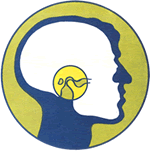Right_Box_Heading2
Paragraph_Content Add_More_Link
TMJ - Temporomandibular Joint

Questions and Answers
- What Are The Temporomandibular Joints?
- What is TMJ Syndrome? What are the symptoms?
- What causes the problem?
- Are there any relatively simple ways to detect a disorder in the Temporomandibular Joint?
- I read that TMJ Disorders have been called the Great Impostor Syndrome. Please Explain.
- Does stress play a part in TMJ Syndrome?
- How are TMJ problems treated?
- How long is the plastic splint worn and how soon should one expect relief?
- What can I do to help others who might be afflicted with the Great Impostor Syndrome?
- What is Traumatic Occlusion?
Q – What Are The Temporomandibular Joints?
A – If you place your fingertips against our face in front of the ears and move your jaw up and down, you can feel the movement of the Temporomandibular Joints. These are similar to hinges and connect the lower jaw to your skull. If the jaw is to perform properly, the upper and lower teeth must mesh properly when you close on the back teeth in a fixed or “normal” bite.
Q – What is TMJ Syndrome? What are the symptoms?
A – TMJ problems have their primary base in the (TMJ) joint mechanism. The actual malfunction may involve the ligaments, muscles or the bone itself. Symptoms are popping, clicking or cracking near the ear, soreness of the jaw, severe pain in the joint area, dizziness, headaches, backaches, eye pain and chronic fatigue – to name a few.
Q – What causes the problem?
A – The causes may be external, internal or both.
External causes might be a blow to the face to jaw – or some sort of injury; for example, whiplash is common cause of externally produced trauma to the TMJ.
The most common internal produced trauma arises from occlusal disharmonies (traumatic occlusion), commonly called “poor bite”. Missing teeth which have not been replaced can also produce disharmonies.
Forms of arthritis also may be internal causative factors.
Further, poorly fitting dentures and partial dentures or fixed bridges which have outlived their usefulness can create TMJ problems.
Q – Are there any relatively simple ways to detect a disorder in the Temporomandibular Joint?
A – If a person suspects this type of disorder, he/she might try these things.
- Press the area directly in front of the center of the ear. Pain or tenderness might indicate inflammation of the Temporomandibular Joint.
- Insert the little finger in the ears with the nails facing the back. Press forward gently. If the joint is inflamed, pain might be felt.
- Watching the chin in a mirror, open the mouth wide, then close. Does the chin move straight up and down? If it deviates to one side, it may indicate possible TMJ problems.
- Are there clicking sounds when opening or closing the mouth?
- Is there clenching or grinding the teeth during the day or during sleep? On awakening do the facial muscles feel sore?
Q – I read that TMJ Disorders have been called the Great Impostor Syndrome. Please Explain.
A – Consider the incredible amount of use the jaw gets everyday in talking, eating and even swallowing. It is not surprising that the pivotal point (the Temporomandibular Joint) should often be subject to problems.
But the Great Imposter problem is that the pain itself may surface almost anywhere – head, neck shoulders, back – masquerading as acute or chronic diseases. This includes server headaches, backaches, ringing in the ears or vertigo problems, etc. Because of its genius for disguise, the TMJ problem has been called the Great Impostor at his nasty game.
Q – Does stress play a part in TMJ Syndrome?
A – Surely stress is often a factor. People under emotional stress may unconsciously try to reduce tension by grinding the teeth at night (called “bruxing”). This creates abnormal wear and, subsequently, may interfere with alignment of the upper and lower teeth, resulting in bite problems. If stress is a contributor to the TMJ syndrome, professional counseling, as well as dental treatment, may be needed to correct the problems.
Q – How are TMJ problems treated?
A – If external injury can be ruled out – the problems then may very possibly stem from traumatic occlusion. This bad bite situation can result in stress induced muscle spasms in the Temporomandibular Joint area. These muscles are used whenever you chew, talk, swallow or otherwise move your jaw.
In more difficult cases, muscle relaxants may be used to ease the tension on the involved muscles.
Once the patient is comfortable enough for further treatment, we usually will make study casts to find out if and how far the teeth are out of alignment.
We then may construct an appliance made of plastic for the patient to wear. It is called an Auto Repositioner or TMJ Splint. It is inconspicuous and easily tolerated.
The appliance frees the jaw motion from abnormal guidance by mal-positioned cusps of the teeth. The affected joints can then return to their normal position – and begin the healing process.
Q – How long is the plastic splint worn and how soon should one expect relief?
A – These are difficult questions. In most cases the appliance is worn three to four months and some Temporomandibular Joint dysfunction patients notice relief within one to two weeks. However, please don’t expect miracles. TMJ problems don’t occur overnight and patience is a necessity.
Q – What can I do to help others who might be afflicted with the Great Impostor Syndrome?
A – Probably the best thing that you can possibly do is simply be aware of the things explained in these questions and answers. If you have friends with vague symptoms such as dizziness, ear ringing, pain in the neck and shoulders, popping of the jaw, the inability to open the jaw properly, pain when opening or chewing or intermittent headaches, remember that these symptoms may be of dental origin. We will be glad to see them for consultation. We will help all we can.
Q – What is Traumatic Occlusion?
A – In a normally functioning mouth, the constant touch-tapping during conversation, mastication and swallowing keeps the teeth positioned properly. If the teeth are matched and balanced, the forces are directed against the long axis of each tooth.
However, if biting disharmony exists the lower jaw can be forced forward, backward or sideward. The resulting trauma can destroy the teeth and/or supporting bone and can injure the temporomandibular hinge joint.
Traumatic occlusion is comparable to interference in finely machined gearwheels. Improperly aligned, the teeth in the gearwheel will be destroyed by traumatic wear. Also, the central shaft can be damaged.
TO MINIMIZE THE PROBLEM:
- Save all functional teeth and have missing teeth replaced to avoid shifting.
- Have teeth equilibrated (the forces equalized), if necessary. More involved dentistry may be required to restore the bite to proper function.
- Cooperate and do everything possible to destroy the Great Imposter.




